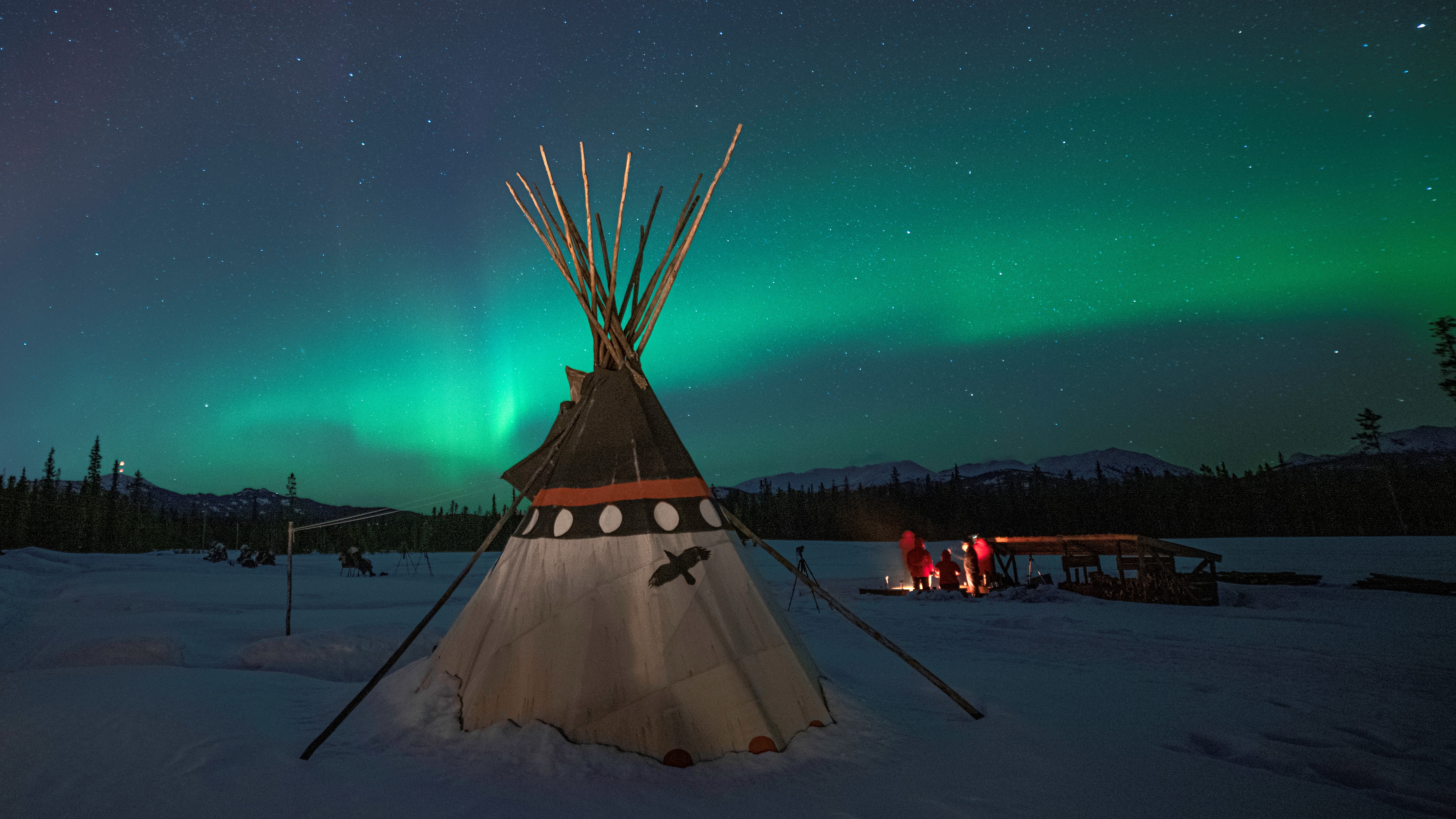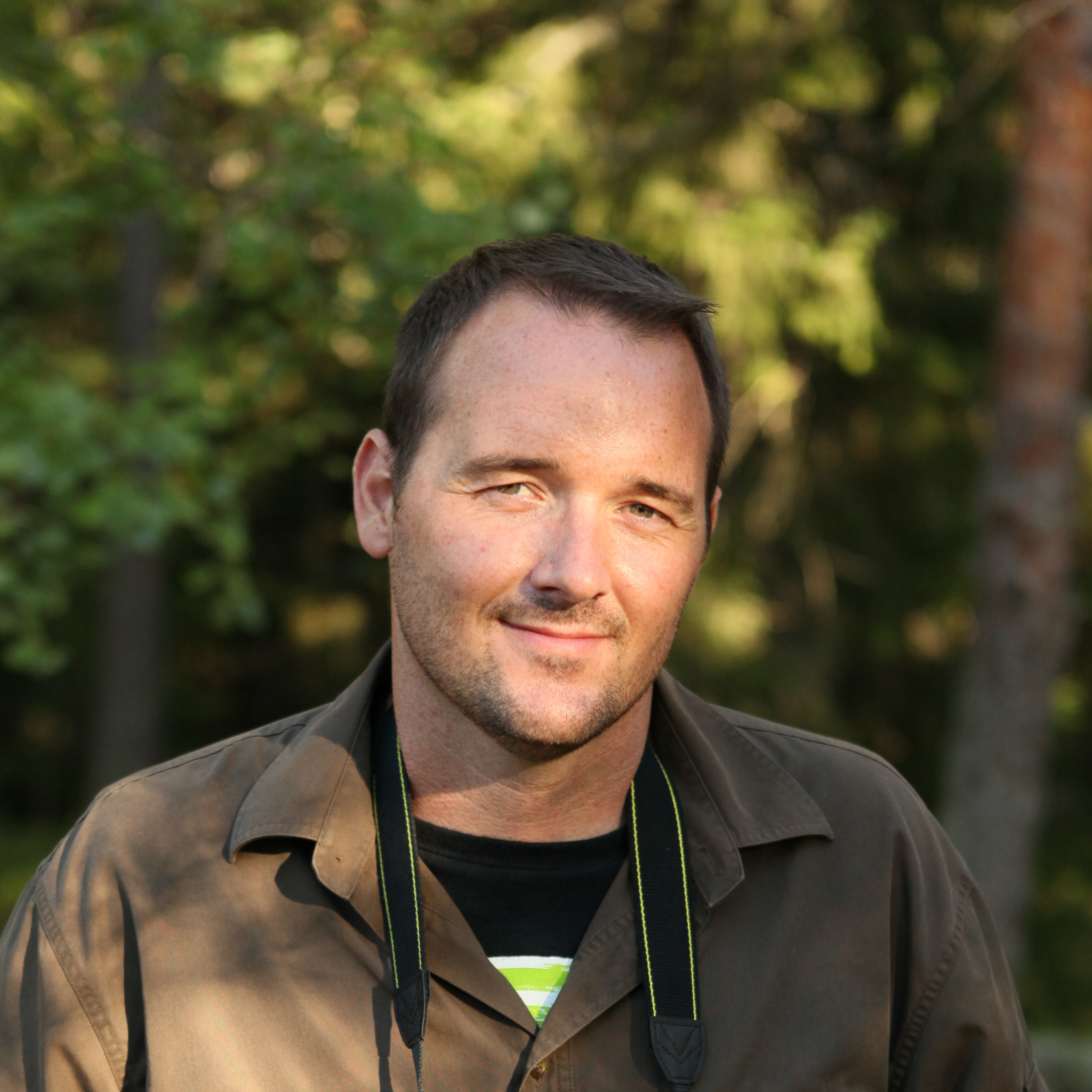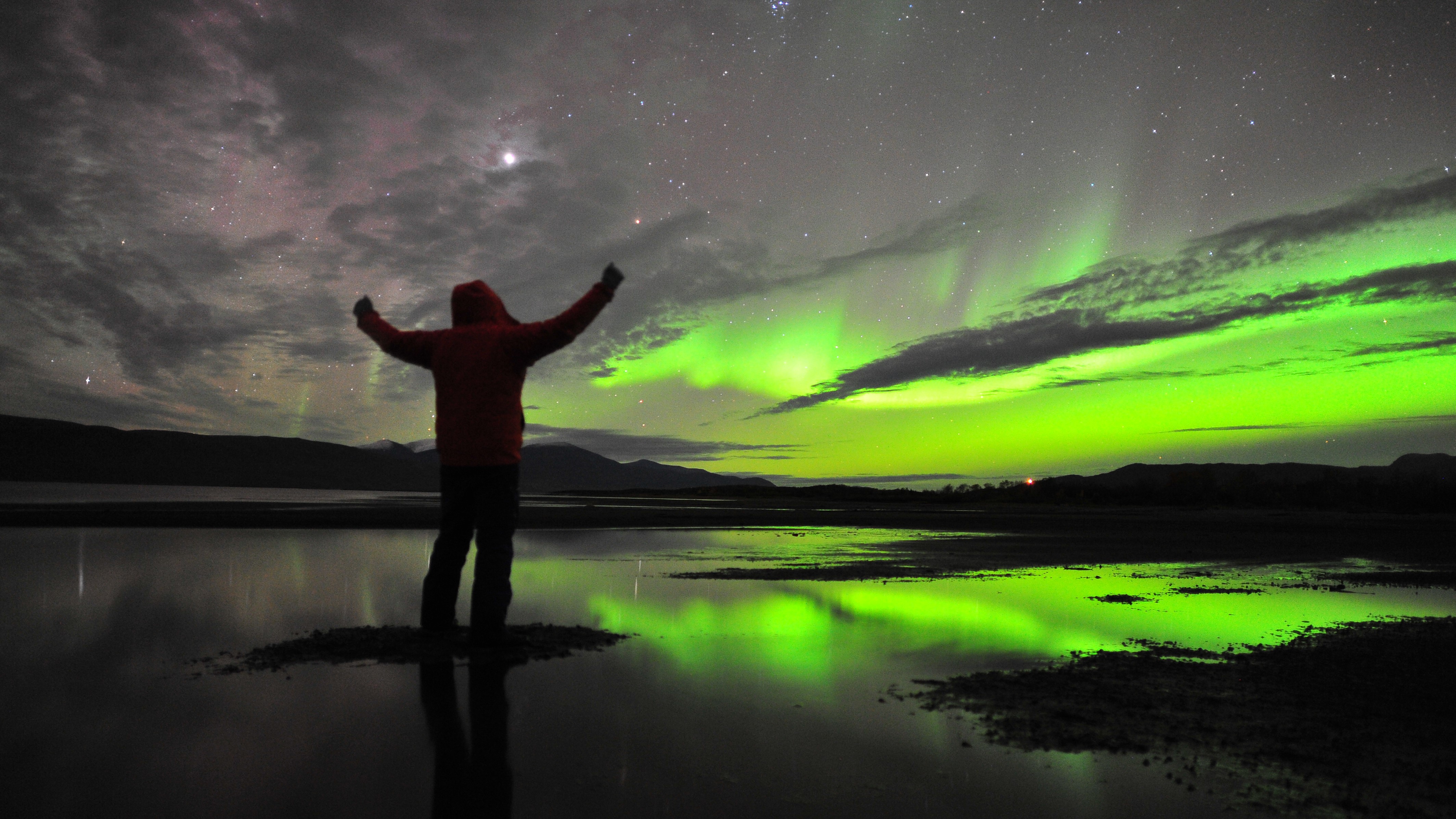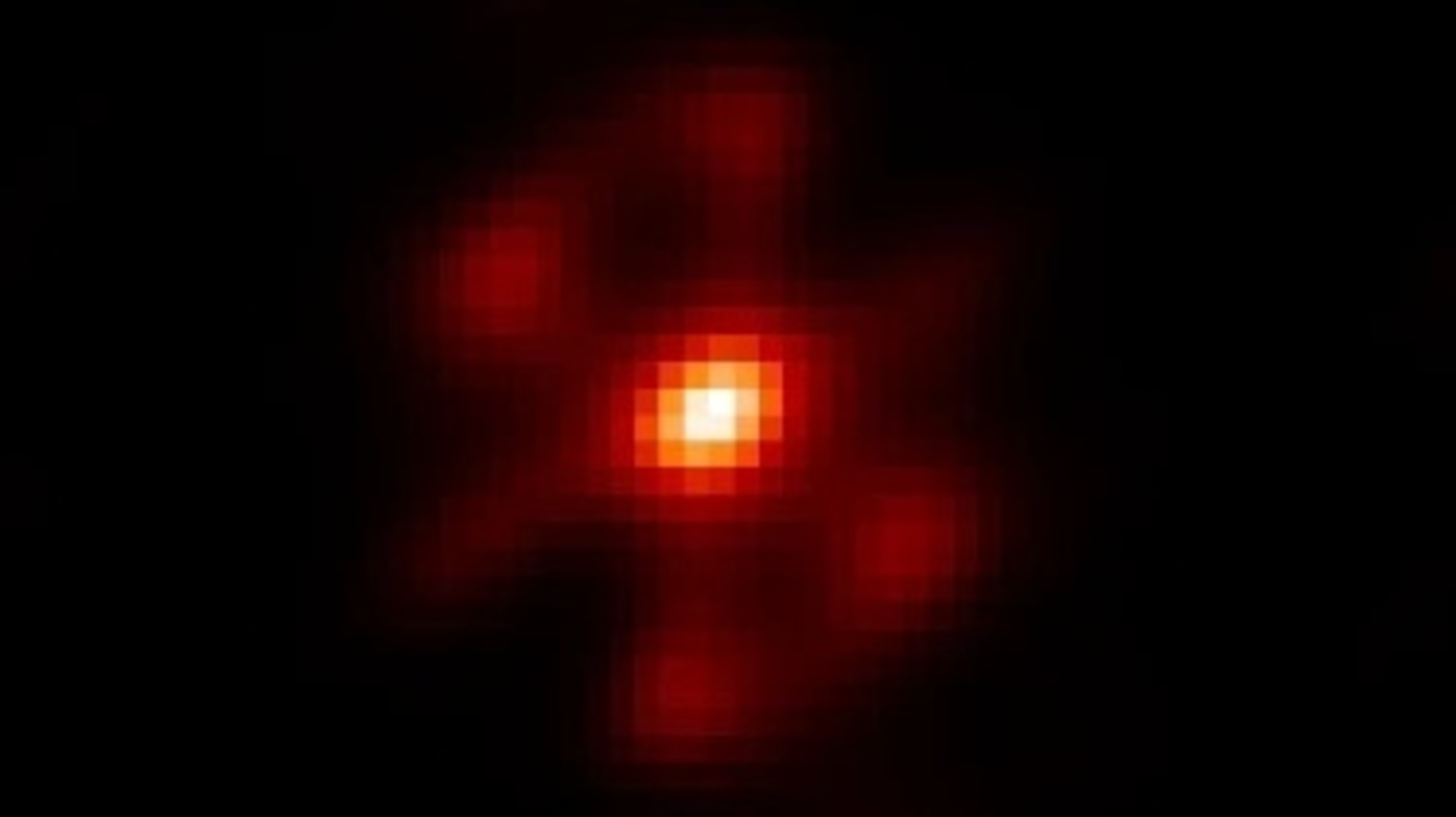Aurora myths, legends and misconceptions
Throughout the world, auroras have sparked numerous interpretations ranging from an omen of impending death to the presence of departed spirits.

Auroras have amazed people around the world for millennia with their mesmerizing light dance across the night sky.
If you've ever been fortunate enough to witness the northern lights or southern lights in person, it likely won't surprise you that they have inspired countless myths and legends around the world.
Related: Where and when to see the northern lights
This phenomenon is caused by the interaction between solar particles and our planet's atmosphere. The remarkable spectacle occurs near Earth's poles and manifests as a stunningly colorful display, almost as if the sky were ablaze with light.
Scientists are still studying auroras today, and likewise, our ancient ancestors tried to make sense of the phenomenon themselves, developing their own, far more whimsical explanations steeped in wonder, fear and awe.
Here we take a closer look at the rich mythology of auroras, from ancestral spirits to indicators of impending doom, and also set out to debunk some common misconceptions.
A gift from the gods
Many cultures attribute auroras to divine beings. While some believed them to be the workings of the gods, others thought they were a pathway to the afterlife.
Breaking space news, the latest updates on rocket launches, skywatching events and more!
The Vikings celebrated the northern lights, as for them it meant their god Odin had sent the Valkyries — usually depicted as female warriors riding on horses through the skies — to retrieve the souls of fallen warriors and take them to Odin's hall Valhalla. According to the travel site Norwegian Travel the Vikings believed the aurora was light reflected off of the Valkyries' battle armor. Other Nordic legends suggest that the northern lights were the breath of soldiers who had died in battle, and in some tales, the aurora was claimed to be the "Bifrost Bridge" leading those fallen in battle to Valhalla, according to the travel site Norweigan Coastal Express, Hurtigruten.
Many North American tribes also have their own explanations for the aurora. According to the travel website the Aurora Zone, the Cree Indians believe the northern lights are the spirits of the departed trying to communicate with loved ones still on Earth. The Algonquins' belief is that the northern lights are from a fire built by their creator Nanahbozho to remind them that he is watching over them. The people of remote Nunavik Island told tales that describe the aurora as walrus spirits playing ball with a human skull.
A particular poetic aurora myth stems from Finland, where it was believed that the light show was created by the fabled fire fox sprinting across the snow so quickly that it caused sparks to fly up and ignite the sky. The Finnish word for the northern lights "revontulet" translates as "fire fox," according to the Aurora Zone.
Symbol of hope and renewal

The term aurora borealis is derived from the Greek language where aurora means "sunrise," and boreas means "winds," according to the travel site Arctic Kingdom. In Greek mythology, the character Aurora was the sister of the sun and moon gods and she would fly across the sky in a colorful chariot to signal the start of a new day. Similarly, the Romans believed that Aurora was the goddess of dawn. It is intriguing to note that both cultures associated the aurora with the beginning of a new day, even though the infamous light show is typically visible in the late evening.
For Swedish fishermen, an aurora sighting was a good omen as they believed the lights were the reflections of giant schools of herring swimming nearby, according to the travel site, Hurtigruten. For them, the northern lights were not something to fear but instead were celebrated as they promised good fortune and a generous catch.
Similarly in Iceland, auroras were welcomed, but for a rather different reason. Here, the northern lights were once thought to help relieve the pain of childbirth. But the expectant mother must avert her gaze because if she looked at the lights her child would be born cross-eyed, so the tale goes.
A bad omen
Not all cultures celebrate the northern and southern lights. For many, it's a bad omen, one that could indicate impending doom or even carry you off into the sky.
On rare occasions, usually, during heightened solar activity, the northern lights can be seen as far south as central and southern Europe. These auroras are usually red in color and were once considered to be a sign of bloodshed. There are tales dating back to the Franco-Prussian War, the American Civil War, the French Revolution, and the Greater Wrath in Finland where magnificent red auroras were thought to be reflections of battlefields covered in blood, according to the Finland travel and tourism site.
Related: Aurora colors: What causes them and why do they vary?
For the indigenous Finno-Ugric people of northern Scandinavia known as the Sámi, auroras are considered to be the souls of the dead and are both feared and respected in equal measure, according to Hurtigruten. It is believed that if you catch the attention of the aurora, it could reach down and carry you off into the sky. As such the Sámi try and keep a low profile when the aurora borealis is present. That means no waving, whistling, or singing, and even to this day, many Sámi stay indoors when the lights are overhead, just to be on the safe side.
Down under, the aurora australis, or the southern lights, are an important part of Aboriginal astronomical traditions and often associated with fire, death, blood and omens — much like many Native American cultures. Aboriginal communities commonly see auroras as fires in the cosmos, according to the educational site Australian Indigenous Astronomy.
The Gunditjmara community in western Victoria refers to them as puae buae meaning "ashes," while the Gunai people of eastern Victoria consider them to be bushfires in the spirit world and an indication of impending disaster. The Dieri and Ngarrindjeri communities of South Australia view auroras as fires generated by sky spirits. In southwestern Queensland, the phenomenon is regarded as "feast fires" of the Oola Pikka — spirits that communicate with Elders through the aurora.
Common misconceptions — debunked
We asked Chad Blakley, founder of the aurora travel tour company Lights over Lapland, to debunk some common misconceptions about auroras.

Chad Blakley is the founder and the original guide for Lights over Lapland. Lights over Lapland is one of the oldest and most trusted aurora borealis outfitters in the world and is located in Abisko National Park, Sweden. The company was founded in 2011 and is now home to a team of highly trained professional, aurora guides from all over the planet.
It has to be cold to see auroras
This is a common misconception that we hear all the time. The truth of the matter is that the northern lights are happening 365 days a year, 24 hours a day in the aurora zone — that is the location around the North and South Pole where the aurora is nearly always present. The reason that most people think that it needs to be cold to see the auroras likely comes from the fact that the northern lights are usually seen at the poles, where it is usually cold. That said, some of the most powerful auroras of the season usually occur around the spring and autumn equinox, which are actually the two warmest times of the entire aurora season.
Auroras only happen in the middle of winter
This is another common misconception. The northern lights are present 365 days per year, 24 hours a day. That being said, it must be dark in order to see the northern lights. Since the auroras occur primarily in the polar regions, most photos and videos of the northern lights are captured in cold, winter-like conditions, which spreads this misconception.
You can't see the aurora during a full moon
This is another classic example of misinformation that has no basis in fact. The bottom line is this: you can absolutely see the northern lights during all phases of the lunar cycle. The primary factor here is that a full moon can make it more difficult to see weak auroras, but I am a firm believer that a full moon, combined with powerful auroras, which are often present during solar maximum is one of the finest combinations, a sky watcher could ever ask for.
The reason for this is simple: the bright moonlight illuminates the surroundings and allows you to see incredibly dimly lit landscapes with beautiful auroras dancing overhead. Our company offers lots of photographic expeditions with the sole focus of capturing pictures of the northern lights, and I can see from experience that a large percentage of professional photographers actually choose to travel with us during a full moon because it is such a photogenic and spectacular combination.
Auroras are limited to a few years each decade
This is not one that we hear quite as often as the others, but it does come up from time to time. I suspected this likely comes from the fact that the sun goes through cycles of high activity and low activity every 12 to 13 years. This process is called solar maximum and solar minimum.
I have been out chasing the auroras for nearly 15 years which means I have been an aurora guide during both solar maximum and solar minimum and I can say without hesitation that we do in fact see auroras during both phases of solar output. The primary difference is that during solar maximum, we tend to see more powerful and really extravagant auroras, whereas during solar minimum these extremely powerful auroras are not quite as common — but they do still happen several times per season.
The reality is that there are auroras happening 24 hours a day seven days a week 365 days a year and this has been going on as long as the Earth has been orbiting the sun. The good news is that we are currently approaching solar maximum — and as luck would have it, It’s one of the most powerful solar maximums ever recorded. This means that the next several years are an incredibly good time to travel to the Arctic and see the northern lights.
There is one single best place to see the northern lights
This is a tricky one, as I believe that there is actually one place on Earth that stands out as the best place on the planet to see the auroras. Lots of destinations like to market themselves as the “best” place to see the northern lights but the simple truth of the matter is that there are a few conditions that must be present to have a successful aurora sighting.
The first is that you almost always need to be above the Arctic Circle or below the Antarctic Circle, in the aurora zone in order to increase the odds of seeing the lights. The second factor is that you need a clear sky. The truth of the matter is that weather patterns above the Arctic Circle or below the Antarctic Circle tend to be very unstable with lots of heavy weather including snow, wind, rain, blizzards, etc. Taking both of the previous factors into consideration, there is ONE location that is above the Arctic Circle and has a very high likelihood of clear skies. This location is Abisko National Park, Sweden. The reason that Abisko stands out as the clear winner is the fact that it is right in the middle of a microclimate that leads to more clear skies than any other location in the aurora zone. This microclimate known as the “blue hole of Abisko” gives travelers from all over the planet the best possible chance of success. But you don’t have to take my word for it — you can read more about the blue hole here, and you can keep an eye on the sky with Lights Over Lapland’s array of still, HD and VR webcams which have been keeping an eye on the sky for more than a decade here.
Auroras are always green
This final topic is actually something that our guides speak about during all of our tours. This misconception comes from the fact that the vast majority of auroras that we see are in fact green. That said, while green may be the most common color of aurora, it is most certainly not the only color of aurora.
I have seen green, red, blue, purple, pink, and even white auroras. When you are in the aurora zone, it’s very common to see a green aurora because this is the portion of the aurora that is visible directly overhead at this longitude and latitude. As you travel further away from the aurora zones green becomes a slightly less common color and red becomes a bit more common because the vast majority of auroras are created by the oxygen layer in the atmosphere, and all oxygen-based auroras are green on the bottom third and red on the top two thirds which means that your geographic location on earth has a large impact on what color spectrum you are able to see.
Additional resources
You can learn more about the northern lights at NASA's aurora page. NOAA's Space Weather Prediction Center provides a 30-minute aurora forecast, and you can watch livestreams of the northern lights on Lights over Lapland's webcam page and via Explore.org.
Bibliography
The Aurora Zone. (n.d.). Mythology of the Northern Lights. The Aurora Zone. https://www.theaurorazone.com/about-the-aurora/aurora-legends
Dark side of the auroras – meanings & myths: Visit Finnish Lapland. Visit Lapland. (n.d.). https://www.lapland.fi/visit/only-in-lapland/lapland-northern-lights-myths-auroras/
History of the Northern Lights: Myths and legends. Hurtigruten Norwegian Coastal Express. (n.d.). https://global.hurtigruten.com/inspiration/experiences/northern-lights/myths-legends
Home. Australian Indigenous Astronomy. (n.d.). http://www.aboriginalastronomy.com.au/
Northern Lights and their myths. Arctic Kingdom. (2020, December 9). https://resources.arctickingdom.com/northern-lights-and-their-myths
Northern lights myths. Norwegian Travel. (2021, August 23). https://www.norwegian.travel/inspiration/northern-lights-myths

Daisy Dobrijevic joined Space.com in February 2022 having previously worked for our sister publication All About Space magazine as a staff writer. Before joining us, Daisy completed an editorial internship with the BBC Sky at Night Magazine and worked at the National Space Centre in Leicester, U.K., where she enjoyed communicating space science to the public. In 2021, Daisy completed a PhD in plant physiology and also holds a Master's in Environmental Science, she is currently based in Nottingham, U.K. Daisy is passionate about all things space, with a penchant for solar activity and space weather. She has a strong interest in astrotourism and loves nothing more than a good northern lights chase!



